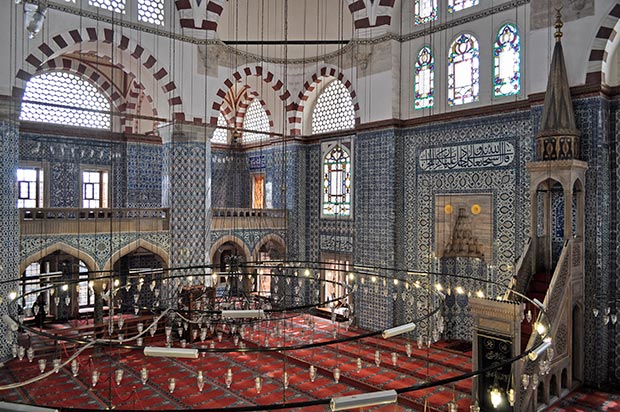An enduring mystery in the history of the Balkans is the choice of the Bosniaks to convert to Islam, a choice that diverged from that of their neighboring communities, the Serbs and Croats, who opted not to follow suit.
People wondered what happened, why things turned out that way and what were the factors that contributed to the outcome. Numerous historians and social anthropologists explored the topic, creating a variety of opinions that either diverged substantially or conflicted with each other.
The earliest methodical studies on the subject, directly or indirectly, were "Povijest Bosne (History of Bosnia)" by a Bosnian historian of the 19 th century, Salih Sidki Muvekkit-Hadžihuseinović (d. 1888); "Islamizacija Bosne i Hercegovine (Islamization of Bosnia and Hercegovina)" by Mehmed Handžić (d. 1944), who was an outstanding Bosnian religious scholar and politician; "The Bogomils of Bulgaria and Bosnia" by Linus Pierpont Brockett (d. 1893), an American historian; "Bogomili i Patareni (Bogmils and Patarens)" by Franjo Rački (d. 1894) who was one of the most authoritative Croatian historians, politicians and Catholic priests in the 19 th century; "Bogomili Crkva Bosanska i Krstjani (Bogomils the Bosnian Church and Krstjans)" by Božidar Petranović (d. 1874), a leading Serbian scholar and historian also in the 19 th century.

It is apparent that the theme in question was a captivating idea and appealing opportunity. It was approached from different perspectives by protagonists who harbored different, yet conflicting, interests, leading to correspondingly different and conflicting results.
While being a piece of a larger puzzle, the pursuit of truth in relation to the subject matter was not necessarily the main focus. It's no surprise, therefore, that the debates on the Bosnian religious identity before the Ottomans and the spread of Islam in Bosnia proved too complex to be fully resolved.
Allowing the issue to remain unresolved definitely worked in favor of those seeking to manipulate the truth and sow discord. Here are some of the more recent studies that may not completely solve the conundrum, but can guide the readers through its complexities: Noel Malcolm, "Bosnia A Short History" (1994); Mustafa Imamovic, "Historija Bošnjaka (History of Bosniaks)" (1997); John Fine, "The Bosnian Church, A New Interpretation, A Study of the Bosnian Church and Its Place in State and Society from the 13 th to the 15 th Centuries" (1975); Gorčin Dizdar, "The Standing Stones of Medieval Bosnia: Heresy, Dualism and Symbols in Pre-Ottoman Balkans" (2016).

The fact remains that, by and large, the arrival of the Ottoman Turks and Islam in the region was welcomed by the Bosniaks, but was loathed by the others. Even though the conversion process was slow but sure, the Bosniaks were able to see in Islam and in the prospect of becoming Muslims what their flanking neighbors neither could nor wanted.
Atypical as it may seem, Islam was what the Bosniaks needed - and perhaps even coveted to some extent - while the others dreaded it. The crux of the matter was religious freedom and the freedom of choice.
The Bosniaks acted in accordance with what they believed was best for their personal and national interests. Every community was at it, one way or another. At first, the Balkan lands were a rich tapestry of different mythologies and pagan practices, manifested in myriads of beliefs, myths and rites.
This was true for both the indigenous communities, mainly the Illyrians, and the incoming South Slavs. If mythology and paganism were seen as a preferred choice for the South Slavs, so was the acceptance of Christianity with its Catholic and Orthodox strands at the hands of the Croats and Serbs respectively, and so was, furthermore, the acceptance of a form of Christianity first and of Islam second by the Bosniaks.
In truth, there are no indigenous or homegrown religions in Europe. For ages, the continent was a spiritual wasteland, incessantly trying to this day to revert to its original self. Hence, following the migrations and interactions with others, the continent's inhabitants and entire communities were entitled - yet invited, as it were - to choose whatever they wished and were inclined to, consistent with the precepts of inquisitiveness and freedom.
Accordingly, the moment the Bosniaks chose to become Muslims, they did nothing but exercised their rights neither more nor less than when they adopted Christianity. They were as free and true to themselves when they abandoned first paganism then Christianity in favor of Islam, as their Serbian and Croat counterparts when they abandoned paganism and became Christians.
Even as one group opted for Catholicism and the other for Orthodoxy, that too implied that they all continued to hold on to their prerogatives and to exercise their rights of freedom and choice. All three: the Bosniaks, Serbs and Croats, capitalized on the environment and opportunities presented to them, resolving to be masters of their decisions and, by extensions, destinies.
If the Bosniaks resolved to change their religious path from paganism to Christianity and eventually to Islam, why is their progression deemed to have less accord and moral virtue than the trajectories of the Serbs and Croats from paganism to Christianity? In some sense, all three groups were dissenters, having turned their backs on the religious principles and cultural norms of their ancestors.
This brings up the question of why the ultimate decisions of certain people are not seen as equivalent to those of others? The Bosniaks, Serbs and Croats may be viewed as either forsaking their pagan beliefs and traditions or embracing freedom in their quest for truth, and their choices deserve respect. However, given that the former was never even remotely considered, the only possibility is for the latter to be the case.

Since the Balkans never ceased to function as the confluence of the East and West, of different civilizational undercurrents, and of sets of different, albeit habitually disagreeing, national as well as ideological interests, the arrival of the Ottomans and Islam as their ideological, state and civilizational élan vital additionally spurred the overall sentiment, quickly transforming the Balkans into the hotbed of unprecedented geopolitical crescendos.
The somewhat projectable and governable curve of the religious, socio-political and cultural evolution of the Balkan communities was suddenly turned on its head. The general feeling inclined towards a vibe of uncertainty and instability. So uncontrollably pulsating were the proceedings that in the end even the devastating World War I was instigated there, right in the streets of Sarajevo.
Thus, Islam's presence and the Bosniaks' acceptance of it was not viewed through the prism of the truth-seeking and truth-finding transactions, but rather through the prism of bigoted nationalistic tendencies. The prevalent milieus were structured in a manner that restricted people from thinking or behaving differently.
The themes of religion and its potential spiritual uplifting were harnessed solely for national affirmations across the Balkan territories, due to which a part of national agendas was not the notion of truly enlightening and spiritualizing societies and people by means of religions, but instead nationalizing religions, manipulating its powers and brainwashing people. National identities and pride were the ultimate objectives, with religion serving as the means to achieve them.
It seemed as though people were aware, drawing from countless historical examples, that Islam was invincible. Its strength lay in being a transcendent idea, a revealed system of beliefs and values, and a sustained way of life.
No religion or ideology could stand up to it. Therefore, it was most effective to shift the focus of Islam and Muslims from the domain of spirituality and morality to the vagaries of nationalism and its ever-expanding universe of dogmatism and narrow-mindedness.
For example, it was by no means a coincidence that when in 1217 the medieval Kingdom of Serbia was established, that only two years later, in 1219, there came to pass the formation of an autocephalous Serbian Orthodox Church.
Instead of the latter legitimizing and empowering the former, it was the reverse. The Church was not meant to Christianize Serbia, but the new Kingdom was to Serbianize the Church.
Along the same lines, while the first Archbishop of the autocephalous Serbian Church, Saint Sava (Rastko Nemanjić), was very active in the socio-political life of the nascent Serbian Kingdom, the founding fathers of the Kingdom, such as Stefan Nemanja and Stefan Nemanjić as the founder and the first king (the first-crowned one) respectively, in the end committed themselves to religious service and embraced monastic life.
After Stefan Nemanja embraced monasticism in his later years, he adopted the name Simeon, while Stefan Nemanjić took on the name Simon when he too became a monk.
Unsurprisingly, all three were from the Nemanjić dynasty and were closely related as family members. Stefan Nemanja was the father while Stefan Nemanjić and Saint Sava (Rastko Nemanjić) were his sons.
In this manner, ethnocentrism and religious extremism intertwined, causing a compounded issue where each supported the other. Ethnic bias and nationalistic fervor based on faith became like two halves of a whole.
According to Mark Mazower "throughout history, the Balkans have been a crossroads, a zone of endless military, cultural and economic mixing and clashing between Europe and Asia, Christianity and Islam, Catholicism and Orthodoxy. Subject to violent shifts of borders, rulers and belief systems at the hands of the world's great empires - from the Byzantine to the Habsburg and Ottoman - the Balkans are often called Europe's tinderbox and a seething cauldron of ethnic and religious resentments."